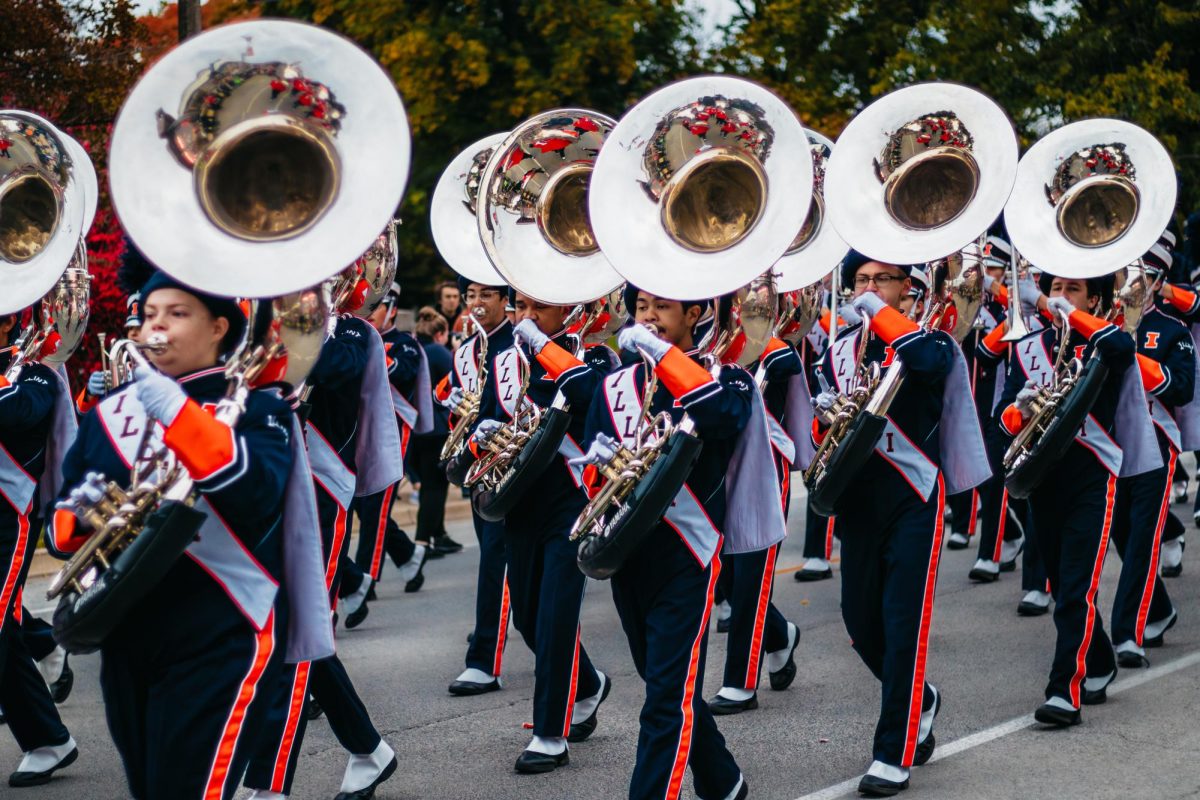Alex Winder prefers to dance through campus while blasting hip-hop music through his big, white Sony headphones. The junior in LAS picked up the Sony’s on the recommendation of a friend and likes the bass quality and style.
The American Academy of Audiology has named October National Protect Your Hearing Month, but you wouldn’t know it by all the earbuds and colorful headphones bopping around.
Dr. Jennifer Black, certified audiologist and manager of the audiology department at Carle Physician Group in Urbana, is concerned iPod-bearing youths aren’t taking the potential for hearing loss seriously.
“Everyone wants to really crank it sometimes,” she said, “but that can’t be done daily without eventual hearing damage.”
Black said the volume at which people listen to their MP3 players is generally way too loud — noting it should never be over half the maximum volume.
Get The Daily Illini in your inbox!
John Moustis, junior in LAS, said his music volume is always set to well over 50 percent.
“That’s not too loud,” said the singer and lead guitarist of The Bread Machine. “I’m in a band, so I know when things are too loud.”
Matt Novotny, senior in FAA, believes headphone selection is a matter to be taken seriously —. not just because of ear health, but also because of sound quality. The drummer and jazz studies major won’t buy a pair unless he’s researched and tried them.
Sitting cross-legged with his early-edition MacBook Pro on the floor of Smith Memorial Hall, Novotny tested a pair of Urbanears headphones. Urban Outfitters and Illini Tech Center workers have deemed the headphones, which come in a spectrum of colors for $60 each, a hot commodity.
“I thought they were gonna completely suck,” said Novotny, after listening to some jazz through a turquoise pair. “They were surprisingly good, though — not a total rip off.”
But Urbanears aren’t up to Novotny’s purchasing standards. He said the bass distorts, the adjustable piece that connects the headband to the “cans” (i.e. over-the-ear portions) is cheap and the possibility to buy a replacement speaker if one were to bust is doubtful.
He said people could get something of better quality than Urbanears for a lower price. However, he advises against earbuds due to non-existent bass performance.
Black and other audiologists also caution against earbuds, but not because of bass issues. Black said earbuds are a problem because of how convenient they are to carry around and use at any spare moment. Ever since Apple began including iconic white earbuds with iPods, students have been placing them in pockets, backpacks and pencil cases between classes.
“Earbuds pretty much give people the chance to harm their hearing all day long,” Black said.
Noise-cancelling headphones are an alternative to earbuds that are marketed to be safer. However, Novotny warns against these varieties because they don’t live up to their promise.
“Noise-cancelling headphones are actually bad for your hearing,” he said. “With them, you’re not getting any of the sound, but you’re still taking in all the frequency.”
Instead of noise-cancelling headphones, Novotny uses $100 sound-isolation headphones by Direct Sound. He bought the pair after testing them at a local drum shop.
Nevertheless, Black said it doesn’t matter medically what kind of headphones or earbuds people use. The point is that the sound is getting in and people need to respect their volume levels if they care about being able to listen to music at all in the future.
“How long can you listen to loud music without permanent hearing loss?” she said. “That’s like asking how long you can tan without getting melanoma.”









